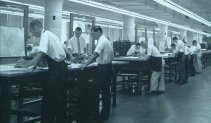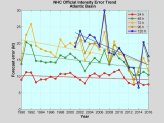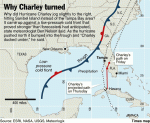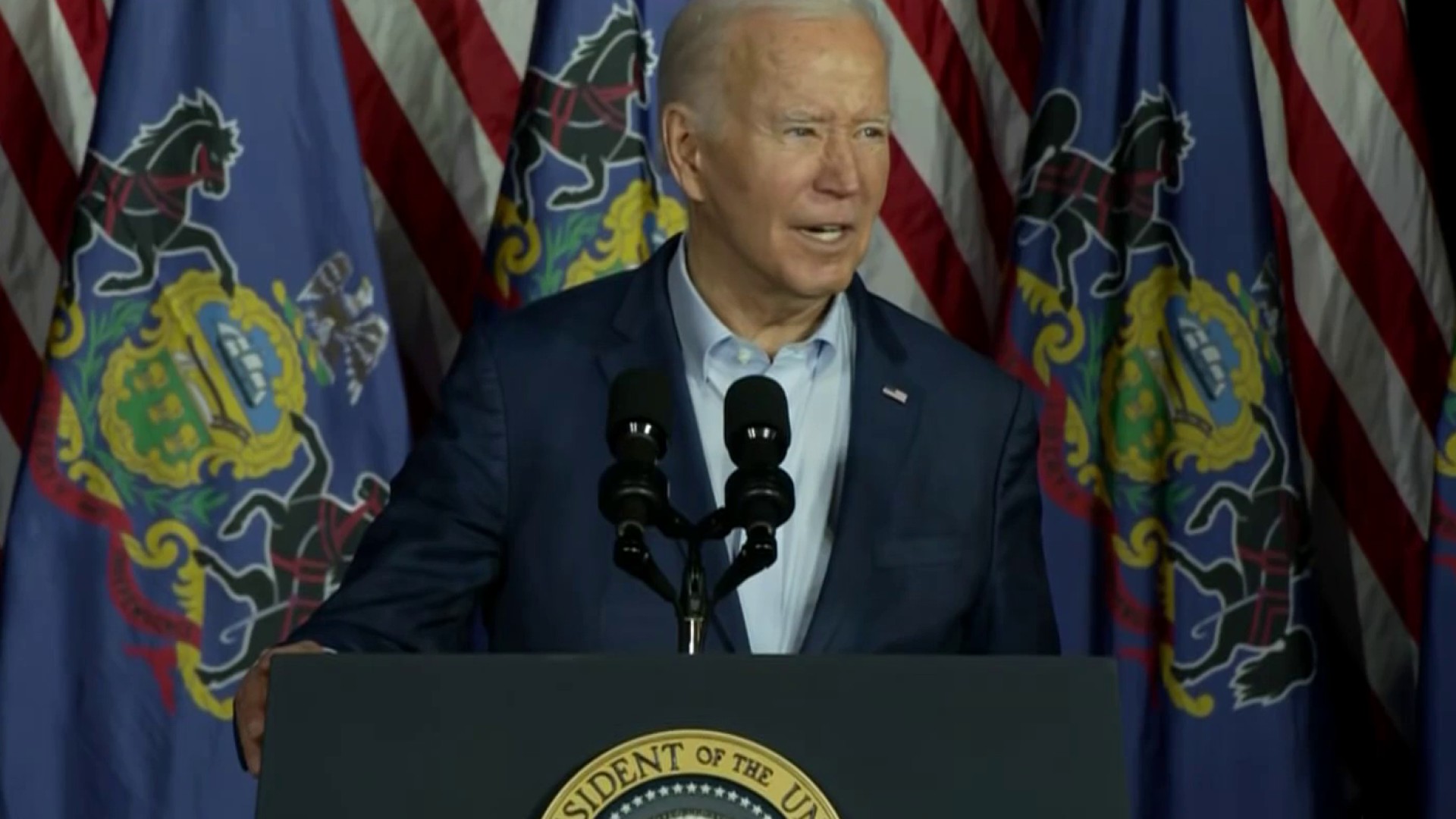We just celebrated the anniversary of the D-Day forecast, June 6, 2017 — the most important forecast in history. The Allied forecasters were right, and the German forecasters were wrong. It’s amazing that anyone got the forecast right, considering how primitive weather forecasting was at the time.
Obviously, people have been trying to predict the weather for a long time. It probably goes back to caveman days, when some clever person looked up at the clouds and figured out that rain was coming soon. But it was an amateur business until around the time of World War II. That makes weather forecasting a very new science, compared to almost all of the others.
What turned weather prediction into a true science? It was the development of computers — even before the public knew there was such a thing. Fighting a war from the Arctic to the Tropics, and from the Atlantic to the Pacific, the Allies needed to know what was going on. Were our ships going right into a typhoon? Would the D-Day invasion be ruined by a strong front? The demand became so great that scientists were pulled out of other specialties in order to focus on this new field.
(I happen to know a little about this, since I got to work with some of these converted meteorologists when I interned at The National Hurricane Center back in the 1970s. A person who dedicated his life to physics was pulled aside and told: “You are now a meteorologist.” They were trained for a couple of months and then thrown out into the middle of the war.)

COMPUTERS-LOVE THEM & HATE THEM
The atmosphere is so complex that it is impossible for scientists to calculate changes by hand. The first attempts took days to make a forecast for just a few hours ahead of time. So, they would figure out the forecast for this afternoon by sometime next week. Not exactly helpful!
Local
Breaking news and the stories that matter to your neighborhood.
The only way to make thousands (and eventually millions) of calculations was with computers. During the time of the D-Day forecast, secret machines were moved into secure rooms to print out some answers. The original machines were as big as a whole room. Philadelphia TV weather legend Wally Kinnan told me once that his job in World War II was to plot and analyze upper-air maps of the Pacific. Then he would take them down the hall and slip them under a door. He had no idea what was behind the door, but later found out it contained a top-secret, primitive computer.
I’ve seen incredible changes in computer models in my 40+ years as a meteorologist. Back in the old days, the models were so coarse that it couldn’t even detect huge afternoon sea breezes, or the “urban heat island” of Philadelphia, let alone a line of thunderstorms. One of the first models was called the LFM. We used to call it the “LUM”, for “Limited Usefulness Model”. It was easy to beat the computers, but we could only predict out to about 3 days with “skill” (better than just predicting “average”).
Take a look below at the improvement in National Weather Service forecasts since I started forecasting. The average error for a 2-day forecast in the 1970s was more than 4 degrees! Thirty-five years later, we could predict out to 5-days with more accuracy than that. And 7-day forecasts are as good as 3-day forecasts used to be.

HOW ABOUT HOW ABOUT HURRICANE FORECASTS? It’s hard to imagine a hurricane becoming a complete surprise to an area. That’s just what happened in 1938. It was called “The Long Island Express”, and hit with NO warning. Flooding at the coast and wind damage inland was unbelievable! The so-called experts at the time couldn’t even tell there was a hurricane threat, let alone warn people. This kind of thing used to happen regularly before weather satellites allowed us to track storms, and sophisticated computer models showed us where the storm was headed (most of the time). The cool graphics below (from AP) show how much hurricane forecasts have improved since the 1970s. The first one shows track errors in 24-hour forecasts, and the second shows 72-hour errors. The farther away the dots are from the center, the worse the forecast track forecasts were. Even into the 1980s, some 24-hour forecasts were off by hundreds of miles. But in the current decade, those dots are clustered pretty close to the center (which would be an error of zero). HURRICANE FORECASTS?
It’s hard to imagine a hurricane becoming a complete surprise to an area. That’s just what happened in 1938. It was called “The Long Island Express”, and hit with NO warning. Flooding at the coast and wind damage inland was unbelievable! The so-called experts at the time couldn’t even tell there was a hurricane threat, let alone warn people. This kind of thing used to happen regularly before weather satellites allowed us to track storms, and sophisticated computer models showed us where the storm was headed (most of the time).
The cool graphics below (from AP) show how much hurricane forecasts have improved since the 1970s. The first one shows track errors in 24-hour forecasts, and the second shows 72-hour errors. The farther away the dots are from the center, the worse the forecast track forecasts were. Even into the 1980s, some 24-hour forecasts were off by hundreds of miles. But in the current decade, those dots are clustered pretty close to the center (which would be an error of zero).


The toughest part of hurricane predictions is intensity. The National Hurricane Center and the most sophisticated computer models showed virtually no improvement in 24-hour forecasts from the 1970s through the 1990s as the graph below shows. There was slight improvement in 48 and 72 hour forecasts. This was an area of great frustration for forecasters and researchers alike. But there seems to have been a big drop in intensity errors since about 2008. This is an extremely important (and encouraging) development.

SO WHY DO SO MANY PEOPLE THINK FORECASTS ARE JUST AS BAD AS THEY USED TO BE?
Forecasts are clearly better. We can clearly go out farther into the future with some skill. And hurricanes are no longer surprises when they hit our coasts. So, why is there a belief that forecasts have not improved?
Here’s my theory: When I made a forecast on a Wednesday in the 1970s for the upcoming weekend, people were interested in hearing it, BUT DIDN’T BELIEVE IT ENOUGH TO CHANGE THEIR PLANS. So, if the forecast was wrong, they didn’t care. If I do the same thing on a Wednesday now, people have enough confidence in our forecasts that they DO CHANGE THEIR PLANS. AND IF THE FORECAST IS WRONG, THEY GET REALLY MAD!
The developments in social media allow people to give us their opinions much quicker and more easily than in the past. It takes just a few seconds to send a Tweet: “You guys stink! (Or worse)
This overconfidence in forecast accuracy can be a dangerous thing-and not just for our egos. Let’s say a hurricane warning covers hundreds of miles of coastline, and we live near the southern end of the warning area. The forecast track takes the storm to the middle of the warning area. A lot of people mistake that line for a precision forecast, and may not take the proper actions to protect life and property.
Hurricane Charley in 2005 was a perfect example of this.

The dotted line that goes to Tampa was the official forecast track, while the red line was the actual track-just north of Ft. Myers, FL. The hurricane warning did include Ft. Myers, and the county to the north (Charlotte Co.). But many people-way too many people, felt they were not in danger, since the storm was headed to Tampa.
But Charley not only made a bit of a sharper right turn, but it intensified just before landfall, putting 150 mph gusts on the coast. Still, an area under a hurricane warning got hit by a hurricane, and lots of people were still angry about the forecast.
The science part has clearly gotten a lot better over the years. But how much better has the communication of those forecasts gotten? That’s the subject of a future blog.



